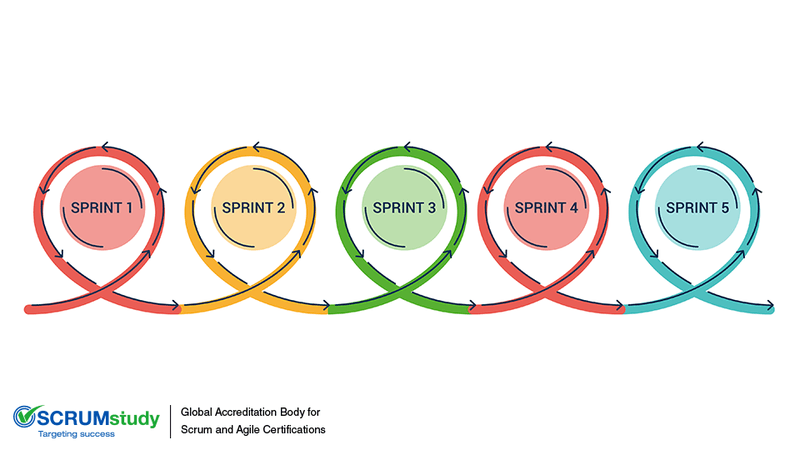
Let’s face it, project management can be scary. Even the smallest mistakes can lead to catastrophic failures. The reasons for potential failure are nearly endless - miscommunication, lack of technical expertise, a lapse in decision-making, and more.

Whilst successful projects may have variables that make them distinct from each other, almost all of them share certain key components that contribute to their success.
In this article, we have compiled a list of the key components that will help you better understand the fundamentals of good project planning and management. Read on to find out.
The approach with which one pursues a project is paramount to how successful the project turns out to be. In this regard, there are 2 distinct approaches - the ‘Not Failure’ mindset & the ‘Success’ mindset.
The ‘Not Failure’ approach here comprises the bare minimum—a set of requirements that the process must fulfill. Meeting them ensures that the project will not fail, but it doesn’t truly result in the best execution of the project itself.
On the other hand, ‘Success’ takes the project a step further by including optional criteria that will improve the odds of a successful endgame — one that will not only meet but exceed the clients' expectations.
We may determine if a project is likely to be successful based on the inclination to either avoid failure or genuinely accomplish success by knowing the overall approach to the project development process — especially when considering the integrated team model.
One of the most important steps in successful project management and execution is to ensure that your new project's requirements are clearly articulated and written down in detail so that everyone engaged in the project is aware of them.
Ascertain that all stakeholders involved are aware of what is not included in successful project implementation. All of this will necessitate you removing any doubts and providing clear definitions for your project.
You must describe all roles in addition to defining who is accountable for each individual job. These include identifying who is in charge of the whole project, each delivery, client responsibilities, and reporting relationships.
For instance, a junior content writer may be in charge of writing blog articles and reporting to the content editor, who oversees a team of writers as well as the content calendar. The project director reports to the content director, who reports to the project director, and so on.
Roles, duties, and reporting structures are defined to ensure that everyone understands what is expected of them and that they are held accountable throughout the project.

Keep in mind that, regardless of how well-defined the roles and duties are, you'll need to check in on a daily basis to make sure everything is running well. Meetings, weekly reports, or brief daily chats utilizing your chosen project management software may all be used as check-ins.
Before moving on to the next stage of a project, you may need to have customer permission at certain milestones.
If you're developing a website, for example, you might need to check in with the customer once a week to make sure the modifications you've made are what they want. Your customer should be aware that their feedback is important to the project's progress.
You can ensure that all parties involved have a clear grasp of the project’s needs by developing efficient communication channels that allow employees to contribute their expertise and skills.
Employees that are able to retain confidence, recognize possible difficulties, and clarify information can benefit from spoken, virtual, written, and other forms of communication.
To eliminate any assumptions, define objectives, and manage customer expectations. The best project management practices always entail employing frequent and effective communication channels.
Project management and planning software is currently used by almost every successful company. These might be commercial tools such or internally developed project roadmaps.
The right project management tools can help decrease delays and hazards. However, just because a business utilizes project management technology doesn't indicate they have a winning attitude or the aforementioned ‘Success Mindset’. It's how the tools are being utilized that matters.
As a project advances, delays are typical, mainly due to unanticipated problems. It's a ‘Not Failure’ attitude when a business merely utilizes its project management tools to track those delays.
However, the ‘Success’ mentality is demonstrated when the business uses those tools to identify reasons for delays, remove hurdles, alter roadmaps, and verify that the engineers and customers are still on the same page.
Projects management tools come in all shapes and sizes. You could get started by applying a comprehensive to-do list such as Asana or monday.com. Or, you could incorporate workflow tools like Trello or Jira that employ Kanban boards which allow you to keep track of activities and projects as they progress through your process.

While Kanban boards are great for day-to-day task-level activities, if you want something “big picture” then you could try tools such as Microsoft Project that uses Gantt charts that illustrate project completion dates, progress, and milestones. If you want to improve team collaboration, try out tools such as Basecamp or ActiveCollab.
The only way to know if a team will effectively adopt these tools is to look at their track record of successful use of similar technologies on past projects and to ask them to demonstrate how they use them currently.
For example, in order to fully understand the general overview, the customer does not require a long list of particular assignments and dates. These are important for the developer, but the client wants a visual representation of all goals.
A good project manager knows how to build up roadmaps so that every stakeholder can grasp the high-level overview and current state of the project, as well as the particular short-term goals, in a matter of minutes.
Dependencies are important in project management because they illustrate how one task or objective is dependent on another.
Setting dependencies is critical because it allows successful project teams to understand when and how one job's completion affects the start date of a dependent task. If you don't define precise dependencies, your team won't be able to complete tasks in the correct order, and your project will be a disaster.
Note that when all project assumptions aren't made apparent, there are often ambiguous and undefined dependencies. This implies that before establishing explicit dependencies, all assumptions must be disproved and needs must be communicated to the team.
This aspect of effective project management builds on the preceding ones. You must guarantee that your team is committed to the project once assignments have been made to the appropriate individuals with the necessary skills and competencies, and dependencies have been identified.
If your team agrees on the task, understands the criteria, is willing to share their knowledge, and works in a collaborative atmosphere, the project will have a strong commitment. Successful project managers constantly make sure that their commitment is kept and that their projects are completed on time and within budget.
Many firms that provide software development services these days place a premium on the quality of their experts. So, how can a potential customer be confident they're receiving a group of experts that will solve problems rather than create new ones?
The “Not Failure” mentality includes having technical skills alone. Technical competence is likely to be found in any business on the market, but discerning buyers are searching for more.
Developers that embrace a success-centric approach will contribute not just their technical experience, but also their decision-making expertise. For example, the developer must be able to describe the advantages and disadvantages of various languages for the project at hand, as well as specify which features should be considered for long-term planning.
If you can’t rely on a developer or can’t find one that has the necessary qualifications, don’t fret - PolyUno is here for you.

PolyUno can help build scalable, efficient, and powerful software applications for all your business needs. It also provides a streamlined focus on your tasks, project timelines, deliverables, and budget to ensure your expectations are met.
Every client's project is unique and complex, necessitating extensive business research and decision-making. All of this may raise doubts that a team that isn't made up of full-time workers won't be able to complete the task.
To deal with this problem, suppliers offer Sprints as a solution. So what exactly is a 'Sprint'?
It is typical practice to divide down the development process into two-week sprints, with constant contact during each sprint and formal updates before and after each. A potential client will see an obvious red flag if a team is not prepared to operate in sprints.

Weekly sprints have also been implemented by several suppliers with real success mindsets. They are especially beneficial during difficult portions of the project, such as merging client and vendor teams, but they may be utilized throughout the lifecycle.
Weekly sprints are more difficult to implement since they put more demand on the teams. They do, however, give improved insight into progress toward targets and any problems that may arise, allowing teams to begin working on changes before those challenges become major roadblocks.
Demos on a regular basis are another technique that may be utilized to ensure accountability and efficiency. Demos are used to showing the customer what has been done throughout each sprint, giving them complete visibility into the project's progress.
Demos may be tailored to target both business and technical stakeholders, who will most likely have quite different queries and viewpoints. All sides are heard and their queries are answered in this manner.
An effective demo system ensures that everyone is aware of how the project is developing and that everyone is on the same page about the project's goals and future actions.
The final step in effective project management and planning is to identify any possible hazards ahead of time.
Risk identification helps you prevent blunders and lower the chances of project failure. It entails creating a contingency plan that outlines what to do in the event of an emergency (e.g., project scope creep, insufficient funding, major shifts in client expectations, etc.). Before the project begins, you must be prepared to discuss, identify, and analyze any potential risks, as well as establish a contingency plan.
We have talked about 11 key components of a successful project. One component that ties all the others together is flexibility.
Flexibility enables you to be able to adapt to any new developments in the project and find solutions to new problems that may arise. This allows you to keep the project development on track. You must be versatile in order to combine the key components of a successful project.